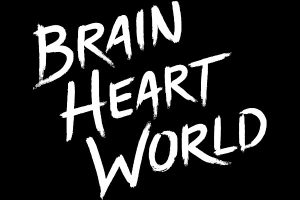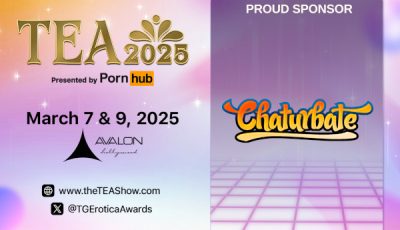New Anti-Porn Documentary Series Conflates Most Important Issues
 It’s been a week full of cries of “witch hunt,” but perhaps none of the attacks on powerful institutions was so blatant or egregious as this: A three-part documentary series called “Brain Heart World” was released on Monday, purporting to expose “how pornography has been shown to negatively affect the consumer, relationships, and society…using only science, facts, and personal accounts.” The anti-porn group Fight the New Drug, which produced the films, wrote in a press release that the series “is free for individuals and families to watch, and public screening licenses can be purchased for those who would like to screen the series to a larger audience.”
It’s been a week full of cries of “witch hunt,” but perhaps none of the attacks on powerful institutions was so blatant or egregious as this: A three-part documentary series called “Brain Heart World” was released on Monday, purporting to expose “how pornography has been shown to negatively affect the consumer, relationships, and society…using only science, facts, and personal accounts.” The anti-porn group Fight the New Drug, which produced the films, wrote in a press release that the series “is free for individuals and families to watch, and public screening licenses can be purchased for those who would like to screen the series to a larger audience.”
Unsurprisingly, like much of the rhetoric around anti-porn thinking, this documentary series appears to blatantly conflating very important aspects of the issues it’s supposedly tackling. (Though I can’t be sure, as one must “register” on the series website in order to watch the film “for free,” and I didn’t feel like turning my contact information, name, and age over to these people. You can watch the trailer for actually free here, though.) These issues being mixed up most egregiously are: 1) addiction, impulse control, and the porn industry itself, and 2) the pornography industry with sex trafficking. These are separate issues, and the separation between them is important for properly identifying and treating the various problems they represent. So let’s take a look at both of these issues, shall we?
First of all, the current glut of free pornography on the internet is often blamed, squarely, on the porn industry itself, especially by activists decrying porn’s addictive properties. But the porn industry was hurt just as badly by free streaming porn online as any one of the “addicts” trotted out in “Brain Heart World.”
Look. The people who make pornography at the professional level are businesspeople who want to make money to feed themselves and their families. They’ve wanted to have paywalls around their content since streaming video started! When free porn-streaming sites like Pornhub came along, the porn industry itself was against them, and much of the industry still is against them. Why? Because those sites made millions on pirated, illegally uploaded content that producers never wanted shown for free.
Those sites were, in effect, stealing profits from professional pornographers. They still are. But because consumers were so drawn to free pornography, the genie couldn’t be put back in the bottle, and now pornography on the internet is more or less free and easy to access. This state of affairs has utterly gutted and upended an entire industry—one that did not want to be gutted or upended—and has resulted in many producers making deals with “the devil” of free streaming sites just to stay in business. In other words, it’s consumer behavior—namely the inability to regulate porn use (often called “porn addiction”) and the unwillingness to pay for it—that has created the monster of free streaming porn online. Not the porn industry.
Secondly, with quotes like “Pornography really is prostitution on screen…The traffickers are the same, the pimps are the same. They just have a camera in the room” plastered all over the website and in the films themselves, “Brain Heart World” would have viewers believe that pornographers are actually sex traffickers—full stop. But that is simply untrue.
With the rise of free streaming porn, the creation and distribution of amateur porn has skyrocketed. Now that almost anyone can make a video of people having sex with their phone, then upload it to sites like Pornhub, much of what’s available on tube sites is, in fact, amateur content. And, as with amateur content of most kinds, its provenance is often uncertain. As such, it’s entirely possible for things like revenge porn, videos of sex trafficking victims, and other non-consensual recordings to end up on streaming sites. And, thus, they do.
But the porn industry itself isn’t involved in filming people who don’t want to be filmed, much less letting that content circulate for free online. Professional pornographers create videos of safe, consensual sex taking place under controlled conditions, complete with verification of age, identity, and STI status of everyone involved. Those same pornographers want to be paid for the work they’ve created, too. They don’t want to go near sex trafficking with a ten-foot pole because A) it’s illegal and B) that simply isn’t what they do.
It’s important for consumers to understand the difference between consensually created professional pornography and videos of sex-trafficking victims being created against their will. And it’s dangerous to treat the two as if they’re the same. It creates fear and uncertainty around a perfectly legal, consensual, and above-board business: pornography. It causes consumers to feel more shame around their engagement with it. It contributes to ignorance around these topics that has real ramifications on the lives of sex workers of all kinds. And it undermines real efforts to stop real sex trafficking when people who are creating legal entertainment for paying customers are lumped in under the same umbrella. (One need merely peruse the YNOT archives to learn how this has played out with legislation that conflates these issues).
It’s not that there are no problems with the porn industry. There surely are. Not everyone who creates porn is a nice person who follows all the rules. Free pornography can, surely, be a source of negativity in the lives of many who lack impulse control and education. And, yes, sex trafficking is a blight on our world. But none of these things are as simple as “Brain Heart World” would have viewers believe, and none of them are the fault of the porn industry, which simply wants to keep making its legal products for the world to pay for and enjoy responsibly. Consumers would do well to keep that in mind.













